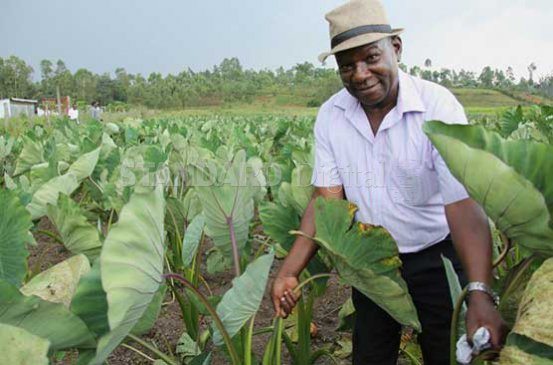With his imminent retirement from Nairobi where he has spent nearly all his life, veteran educationist and publisher David Muruli has set up a jungle of arrow roots to supplement his pension with “green millions”.
His farm, christened Bunyore Riverside Agricultural Development (Brad), is green with thousands of blossoming arrow roots, popularly known as nduma.
Muruli’s goal is to create an agribusiness empire on his 26-acre farm. His flagship produce is the arrow roots which he has set aside 10 acres for. Unlike surrounding farms where arrow roots grow without being tended to, Muruli has given his crop enough care. “I looked around Nairobi and realised residents yearn for food that are considered traditional. Such foods have become rare and consequently expensive as years go by,” says Muruli in Emusutswi village, Vihiga County.
“Arrow root farming has not been taken seriously in Vihiga and other neighbouring counties. It is a noble venture farmers should try out.”
Although he has spent a fortune on the farm and is eager to recoup his investment, Muruli says he is in no hurry as he knows the returns will be good.
“The fact that I have not even harvested the crop is scary, but I am not afraid. We will see how it comes out in the end and learn a lot from the first harvest,” he says.
His expansive farm is the envy of many as it also holds six huge fish ponds, tissue culture banana plantations and more than 1,200 layers.
“We are food insecure in this county because we depend so much on maize, which does not yield much,” he says.
His passion for arrow root farming led him to Tanzania from where he brought giant variety of the arrow root. This, he says, supplements the crop he planted from locally available indigenous seeds. “I had plenty of an open field which, coupled with the loamy soil, is ideal for arrow root farming. Clay soil induce poor rhizome development,” he says.
Arrow roots are not susceptible to serious pest attacks, apart from moles and ants which are easy to control. “The crop takes up to nine months to mature. But if one wants a much higher starch content, the best time to harvest is after the plant is one year old,” he says.
As it is the norm of Kenyans to have a cup of tea in the morning complemented by well cooked nduma, Muruli knows he has a ready market for his crop. He expects an initial harvest of 10 tonnes and is targeting the Nairobi market where arrow roots are a favourite at breakfast tables.
With a single arrow root selling at an average of Sh100 a kilo, Muruli knows he is in for a bumper pay once his arrow roots are ready for harvest.
The nduma, he says, has given him a perfect beginning for a life in retirement away from the fast paced bustle of the city.

